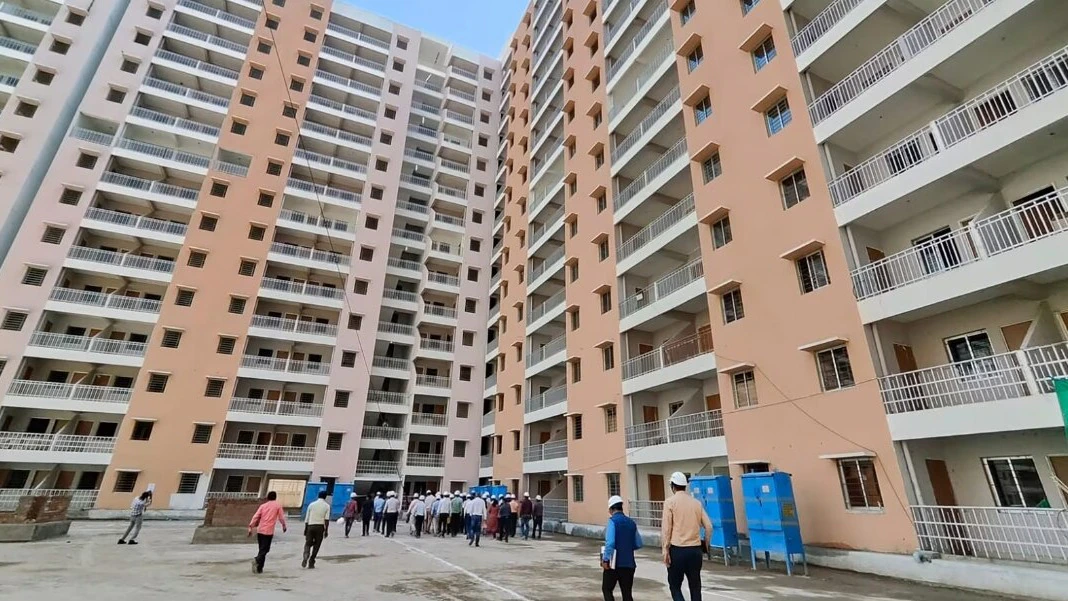Table of Content
- Table of Contents
- 1. Introduction
- 2. Tax Benefits on Home Loan Interest (Section 24)
- 3. Tax Benefits on Principal Repayment (Section 80C)
- 4. Additional Benefits for First-Time Homebuyers (Section 80EE and Section 80EEA)
- 5. Tax Benefits on Stamp Duty and Registration Charges (Section 80C)
- 6. Deduction for Joint Home Loan Owners
- 7. House Property Income and Tax Implications
- 8. Tax-Free Profits from Selling a House (Section 54)
- 9. Tax Benefits on Under-Construction Properties
- 10. Impact of Affordable Housing Schemes on Tax Benefits
- 11. Table of Tax Benefits for Quick Reference
- 12. How to Claim These Tax Benefits
- 13. Common Mistakes to Avoid While Claiming Deductions
- Conclusion
Buying a home is one of the most significant financial decisions for individuals and families. Alongside the emotional satisfaction of owning a house, the Indian government provides numerous tax benefits to encourage homeownership. These tax incentives reduce the financial burden of buying a home and are essential for effective financial planning.
This comprehensive guide explains all the tax benefits available to homebuyers in India, along with detailed examples, tables, and a step-by-step understanding of how to claim them.
Table of Contents
- Introduction
- Tax Benefits on Home Loan Interest (Section 24)
- Tax Benefits on Principal Repayment (Section 80C)
- Additional Benefits for First-Time Homebuyers (Section 80EE and Section 80EEA)
- Tax Benefits on Stamp Duty and Registration Charges (Section 80C)
- Deduction for Joint Home Loan Owners
- House Property Income and Tax Implications
- Tax-Free Profits from Selling a House (Section 54)
- Tax Benefits on Under-Construction Properties
- Impact of Affordable Housing Schemes on Tax Benefits
- Table of Tax Benefits for Quick Reference
- How to Claim These Tax Benefits
- Common Mistakes to Avoid While Claiming Deductions
- Conclusion
1. Introduction
Owning a home not only ensures financial stability but also offers a host of tax benefits. These tax deductions, when used wisely, can save you significant amounts every financial year. By understanding the tax rules, homebuyers can reduce their taxable income and maximize savings.
2. Tax Benefits on Home Loan Interest (Section 24)
Section 24 of the Income Tax Act allows homebuyers to claim deductions on the interest paid on their home loan.
Key Features:
- Deduction limit: Up to ₹2,00,000 per annum for self-occupied properties.
- No upper limit for properties that are rented out.
- The deduction is available only if the property is constructed or purchased within 5 years of taking the loan.
Example Calculation:
|
Scenario |
Interest Paid (₹) |
Deduction Allowed (₹) |
|
Self-occupied property |
2,50,000 |
2,00,000 (maximum limit) |
|
Rented-out property |
3,00,000 |
3,00,000 (full amount) |
3. Tax Benefits on Principal Repayment (Section 80C)
Under Section 80C, homebuyers can claim deductions for the principal amount repaid on their home loan.
Key Features:
- Deduction limit: Up to ₹1,50,000 per annum.
- Available for self-occupied and rented properties.
- The property must not be sold within five years of possession; otherwise, the claimed deduction is reversed.
Additional Uses of Section 80C:
- Investments in PPF, ELSS, and insurance premiums are also covered under the same limit of ₹1,50,000.
4. Additional Benefits for First-Time Homebuyers (Section 80EE and Section 80EEA)
Section 80EE:
- Eligibility: First-time homebuyers with a loan sanctioned between April 1, 2016, and March 31, 2017.
- Deduction limit: Up to ₹50,000 on home loan interest.
Section 80EEA:
- Eligibility: First-time buyers of affordable housing (stamp duty value up to ₹45 lakhs) with loans sanctioned between April 1, 2019, and March 31, 2022.
- Deduction limit: Additional ₹1,50,000 on home loan interest.
|
Section |
Eligibility |
Deduction Limit (₹) |
|
80EE |
First-time buyers (2016-2017) |
50,000 |
|
80EEA |
Affordable housing buyers |
1,50,000 |
5. Tax Benefits on Stamp Duty and Registration Charges (Section 80C)
Homebuyers can claim deductions for stamp duty and registration charges under Section 80C.
Key Features:
- Deduction limit: Up to ₹1,50,000 (combined with principal repayment).
- Can be claimed in the year of property purchase.
- Not applicable for under-construction properties.
6. Deduction for Joint Home Loan Owners
If a home loan is taken jointly, each co-borrower can claim tax benefits individually:
- Interest: Up to ₹2,00,000 per person under Section 24.
- Principal: Up to ₹1,50,000 per person under Section 80C.
Example for a Joint Loan:
|
Borrower |
Interest Paid (₹) |
Deduction Allowed (₹) |
|
Person A |
2,50,000 |
2,00,000 |
|
Person B |
1,50,000 |
1,50,000 |
7. House Property Income and Tax Implications
For Self-Occupied Properties:
- No income is taxable.
For Rented Properties:
- The rent received is taxable after deducting 30% (standard deduction) and interest paid on the home loan.
8. Tax-Free Profits from Selling a House (Section 54)
Key Features:
- If the profit from selling a house is reinvested in another property, the capital gains are exempt.
- The reinvestment must be made within two years of the sale.
9. Tax Benefits on Under-Construction Properties
Tax deductions on interest for under-construction properties can only be claimed after the property is completed. The accumulated interest is divided into five equal parts over five years.
10. Impact of Affordable Housing Schemes on Tax Benefits
Affordable housing schemes like PMAY (Pradhan Mantri Awas Yojana) provide subsidies that complement tax benefits, making homeownership more accessible.
11. Table of Tax Benefits for Quick Reference
|
Section |
Benefit |
Limit (₹) |
Eligibility |
|
24 |
Interest on Home Loan |
2,00,000 |
All homebuyers |
|
80C |
Principal Repayment + Stamp Duty |
1,50,000 |
All homebuyers |
|
80EE |
Additional Interest for First-Time Buyers |
50,000 |
First-time buyers (2016-2017 loans) |
|
80EEA |
Additional Interest for Affordable Housing |
1,50,000 |
Affordable housing buyers |
12. How to Claim These Tax Benefits
- Obtain a home loan interest certificate from the lender.
- Include the deductions while filing your income tax return.
- Retain all supporting documents, including payment receipts and loan statements.
13. Common Mistakes to Avoid While Claiming Deductions
- Not retaining proper documentation.
- Missing the deadline for claiming benefits.
- Selling the property within five years of purchase.
Conclusion
Tax benefits for homebuyers in India provide a significant financial advantage, making homeownership more affordable. By understanding and leveraging these benefits under Sections 24, 80C, 80EE, and 80EEA, buyers can reduce their financial burden while enjoying the security and pride of owning a home.











_1766133697.webp)
Ans 1. Homebuyers can claim deductions on home loan interest (Section 24), principal repayment and stamp duty (Section 80C), and additional interest for first-time buyers (Sections 80EE and 80EEA).
Ans 2. You can claim up to ₹2,00,000 per year for self-occupied properties and the entire interest amount for rented properties.
Ans 3. Yes, under Section 80C, you can claim up to ₹1,50,000 per year for principal repayment and stamp duty.
Ans 4. Section 80EE provides a deduction of ₹50,000 for first-time homebuyers, while Section 80EEA offers an additional ₹1,50,000 for buyers of affordable housing.
Ans 5. Yes, but the interest paid during the construction phase can be claimed in five equal installments after the property is completed.